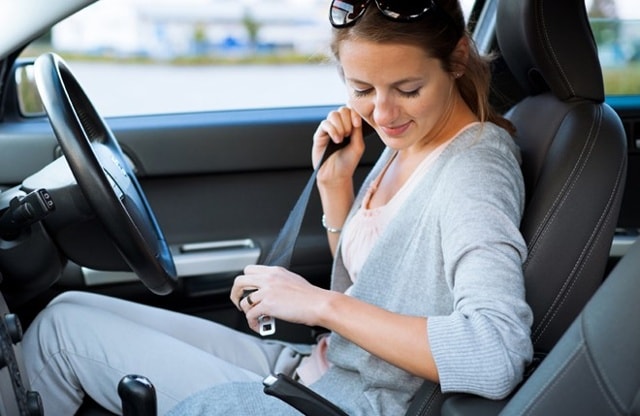How do car seat belts work?
Based on the collision sensor, the controller will tighten the belt, keeping the body from being thrown off the seat to minimize injuries.
A seat belt typically consists of a belt and a buckle. Based on a crash sensor, information is sent to the belt control unit to automatically tighten the belt, thereby holding the body firmly and preventing it from being thrown off the seat.
In the event of a collision, the inertia of the vehicle, driver and passengers are completely independent of each other. Suppose a head-on collision causes the vehicle to suddenly stop, the driver and passengers are independent objects of the vehicle and will continue to move forward.
If the seat belt is not fastened, the person will be thrown forward and hit the windshield, steering wheel, dashboard... at a speed corresponding to the speed of the vehicle before the collision. Even in the case of a collision at high speed, the person can fly through the windshield and continue to collide with other objects during the movement.
 |
| Wearing a seat belt significantly reduces the risk of injury. |
Since glass is a hard material, the head is one of the most vulnerable parts of the body, so the risk of serious injury or death after a collision is very high. According to statistics, 75% of cases of drivers being thrown from the car due to not wearing a seat belt are fatal.
When properly fastened, the belts transmit most of the stopping force through the upper body, such as the pelvis and ribs. This force is applied to many points on the body, so it does not cause much damage and will greatly reduce the effects.
Despite the importance of wearing seat belts in cars, according to a survey conducted by Toyota in 2014 in five Southeast Asian countries, only 25% of drivers and passengers in cars wear seat belts.
The five most common reasons why drivers or passengers in cars often do not wear seat belts are that the car is equipped with airbags, the driver is confident in his or her abilities, the distance traveled is short, it feels uncomfortable, and clothes are easily wrinkled.
To raise awareness about the importance of seat belts, the Japanese automaker launched a road safety campaign, which has been running since 2014 with the participation of 10 countries in the Asia-Pacific region including Brunei, Cambodia, India, Indonesia, Malaysia, Myanmar, Pakistan, Philippines, Thailand and Vietnam. According to Toyota, airbags can perform 15 times better when seat belts are worn. Seat belts also reduce the risk of death by up to 50% for front seat passengers and 75% for rear seat passengers.
According to Zing


